Overview
Workflow automation for land record offices is crucial for enhancing efficiency, accuracy, and data management by mechanizing repetitive tasks and minimizing manual effort. Implementing automation not only leads to significant error reduction and cost savings but also improves operational effectiveness.
Furthermore, it is essential to address potential challenges, such as resistance to change and integration with existing systems, to fully realize these benefits. By embracing automation, land record offices can transform their operations, ensuring a more streamlined and effective workflow.
Introduction
The landscape of land record management is experiencing a transformative shift, as workflow automation emerges as a critical solution for enhancing efficiency and accuracy. By streamlining repetitive tasks and minimizing human error, automation not only improves data precision but also revolutionizes how property management offices handle extensive datasets.
Furthermore, as organizations strive to implement these innovative systems, they encounter challenges such as resistance to change and integration with existing processes. Consequently, how can land record offices effectively navigate these obstacles to fully harness the benefits of automation?
Understand Workflow Automation in Land Record Offices
The implementation of workflow automation for land record offices employs tools designed to simplify and mechanize repetitive tasks within property documentation offices. This innovation significantly reduces manual effort and minimizes errors. Consequently, data precision improves, and overall processes accelerate, enabling property management offices to manage extensive datasets more efficiently. By embracing mechanization, these offices can ensure that property details are updated and accessible in real time, a crucial aspect of effective property management.
Key components of process management include:
- Document management systems
- Automated alerts
- Advanced data extraction tools
These components are essential for property professionals seeking to enhance operational efficiency and adapt to the evolving demands of the sector. Statistics reveal that organizations implementing process optimization can achieve error reduction rates between 40% and 75% compared to manual processing, leading to improved data management and compliance. Furthermore, a significant 80% of organizations plan to increase their investment in automation solutions, underscoring the growing recognition of its benefits in property management.
Additionally, the average organization realizes annual savings of $46,000 by automating finance-related workflows, illustrating the financial advantages of such initiatives. As we approach 2025, the integration of these technologies will be crucial for implementing workflow automation for land record offices, enhancing their effectiveness and responsiveness. However, it is vital to consider potential challenges such as resistance to change and integration issues with legacy systems, which can hinder the successful implementation of automated processes. Engaging insights from industry experts can further elucidate the transformative potential of process optimization in this sector.
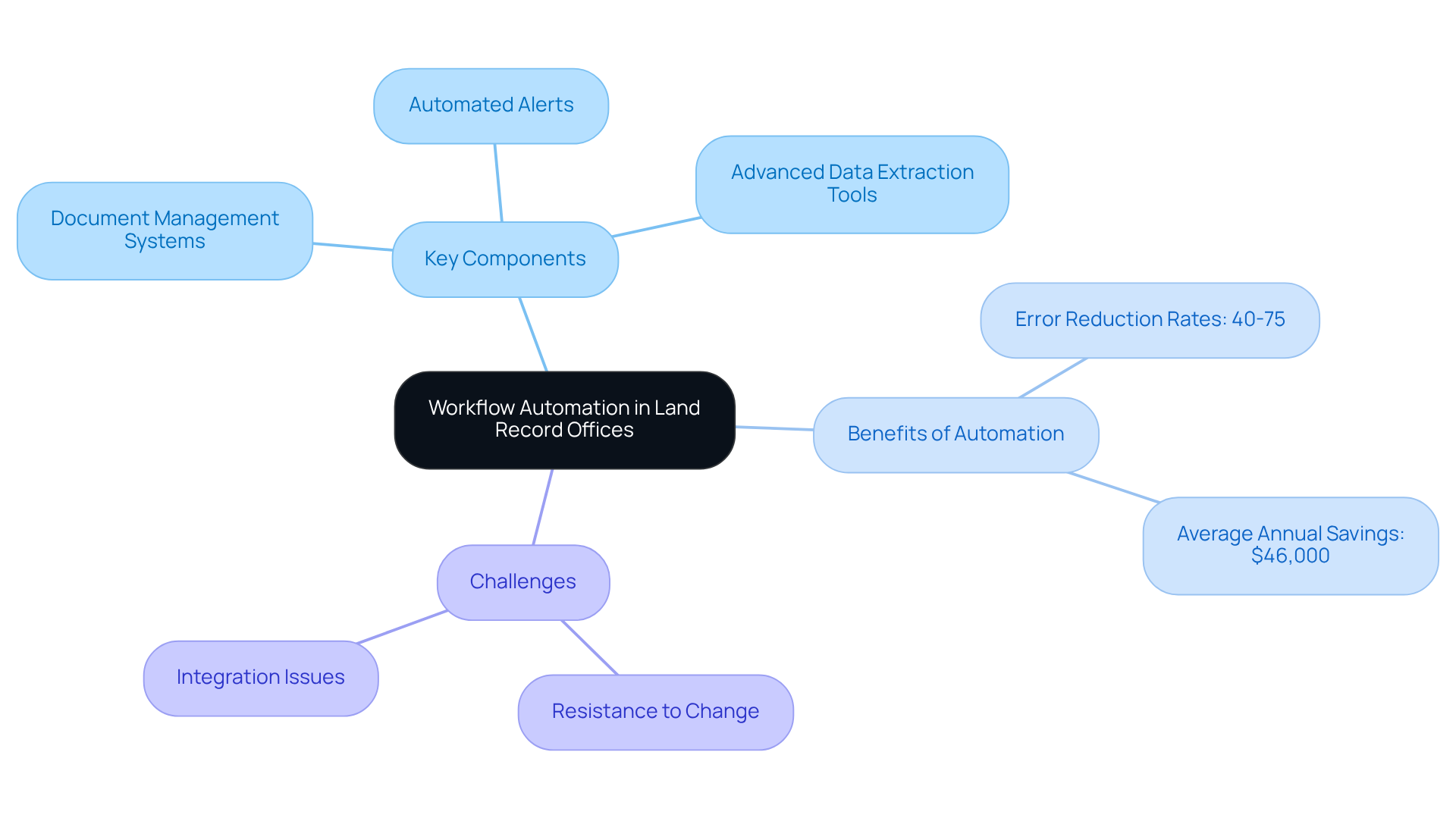
Assess Current Workflow Processes
To enhance your property documentation management, it is imperative to begin by meticulously outlining your existing process steps. Document each step, from data entry to retrieval and reporting, to establish a comprehensive understanding of your operations. Identify bottlenecks, redundancies, and areas susceptible to errors.
Furthermore, engaging with staff is crucial; gather their feedback on the pain points they encounter in their daily tasks. This thorough evaluation will clarify where mechanization can provide the most considerable advantages—such as significantly reducing the time dedicated to manual data entry, which can consume hundreds of hours each year, or improving the precision of information retrieval.
In 2025, addressing these operational challenges is essential, as many land record offices continue to grapple with outdated processes that hinder efficiency and accuracy, which can be improved through workflow automation for land record offices.
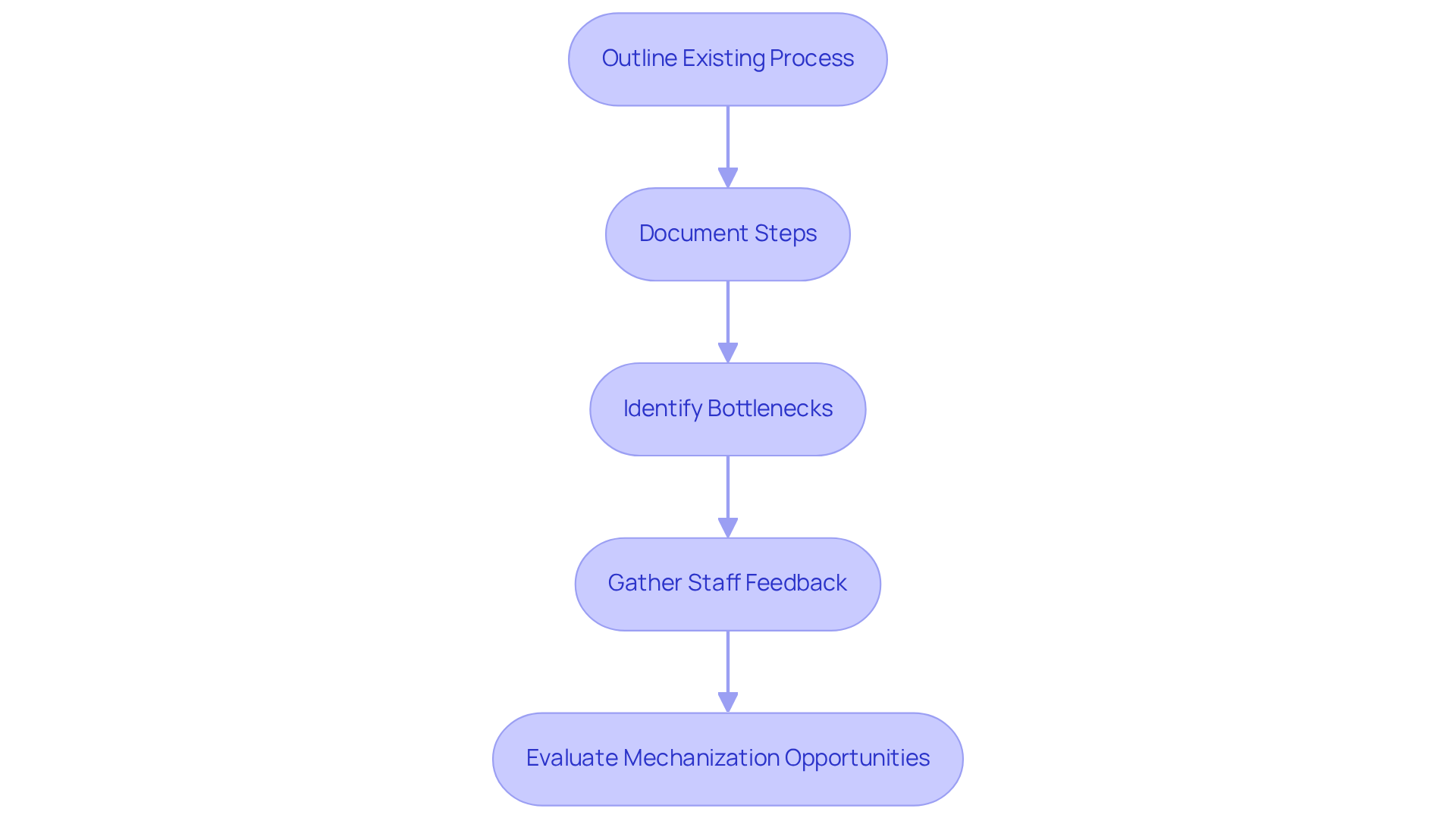
Implement Automation Solutions
After evaluating your existing processes, implementing workflow automation for land record offices is essential. Begin by selecting the appropriate tools tailored to your needs, such as document management systems that leverage optical character recognition for efficient data extraction. Integrate these tools with your current systems to ensure they communicate effectively and support workflow automation for land record offices, establishing a seamless workflow.
For instance, consider using workflow automation for land record offices to automate the document submission and indexing processes, thereby minimizing manual input. Furthermore, establish automated notifications to inform staff of pending tasks or updates, thereby ensuring that everyone remains informed and accountable.
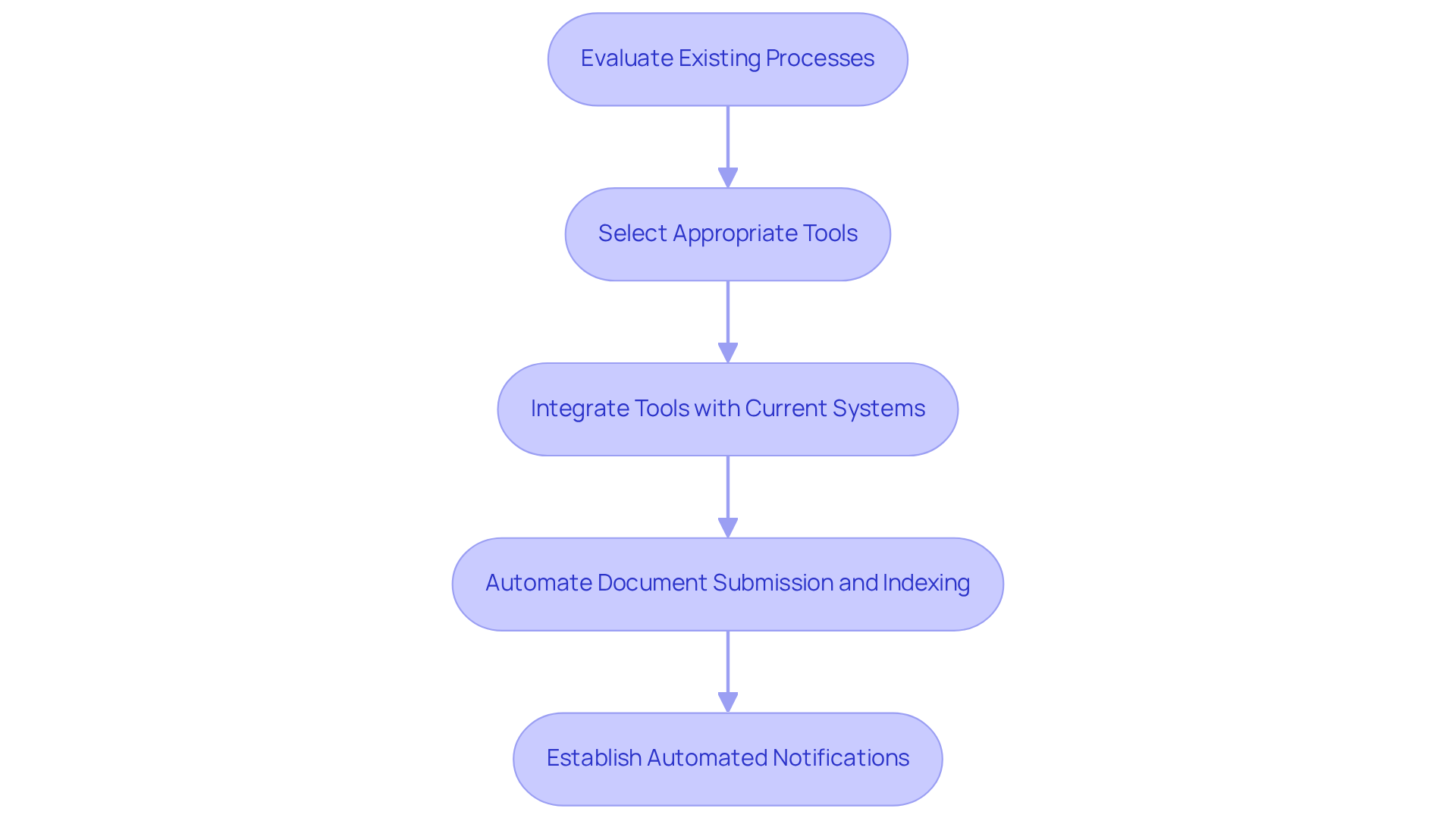
Train Staff on New Automation Systems
To ensure successful workflow automation for land record offices, conducting thorough training sessions for staff is essential. These sessions must focus on efficiently employing the new systems, emphasizing how mechanization can significantly reduce workloads and enhance accuracy. Hands-on training is crucial, complemented by user manuals and quick reference guides that facilitate easy navigation of the new tools. Encouraging feedback during these sessions allows for the identification and resolution of any concerns or challenges staff may encounter. Furthermore, ongoing assistance, along with refresher courses, is vital for sustaining proficiency and boosting confidence in utilizing the systems.
With 92% of staff suggesting that workplace training positively impacts their job engagement, investing in comprehensive training programs is essential for maximizing the effectiveness of technology in workflow automation for land record offices. In addition, companies with extensive employee training programs have been shown to achieve 218% higher income per employee than those lacking formalized training, underscoring the financial benefits of investing in staff development. Continuous training programs are thus indispensable for employee development, ensuring that staff remain proficient and adaptable to evolving technologies.
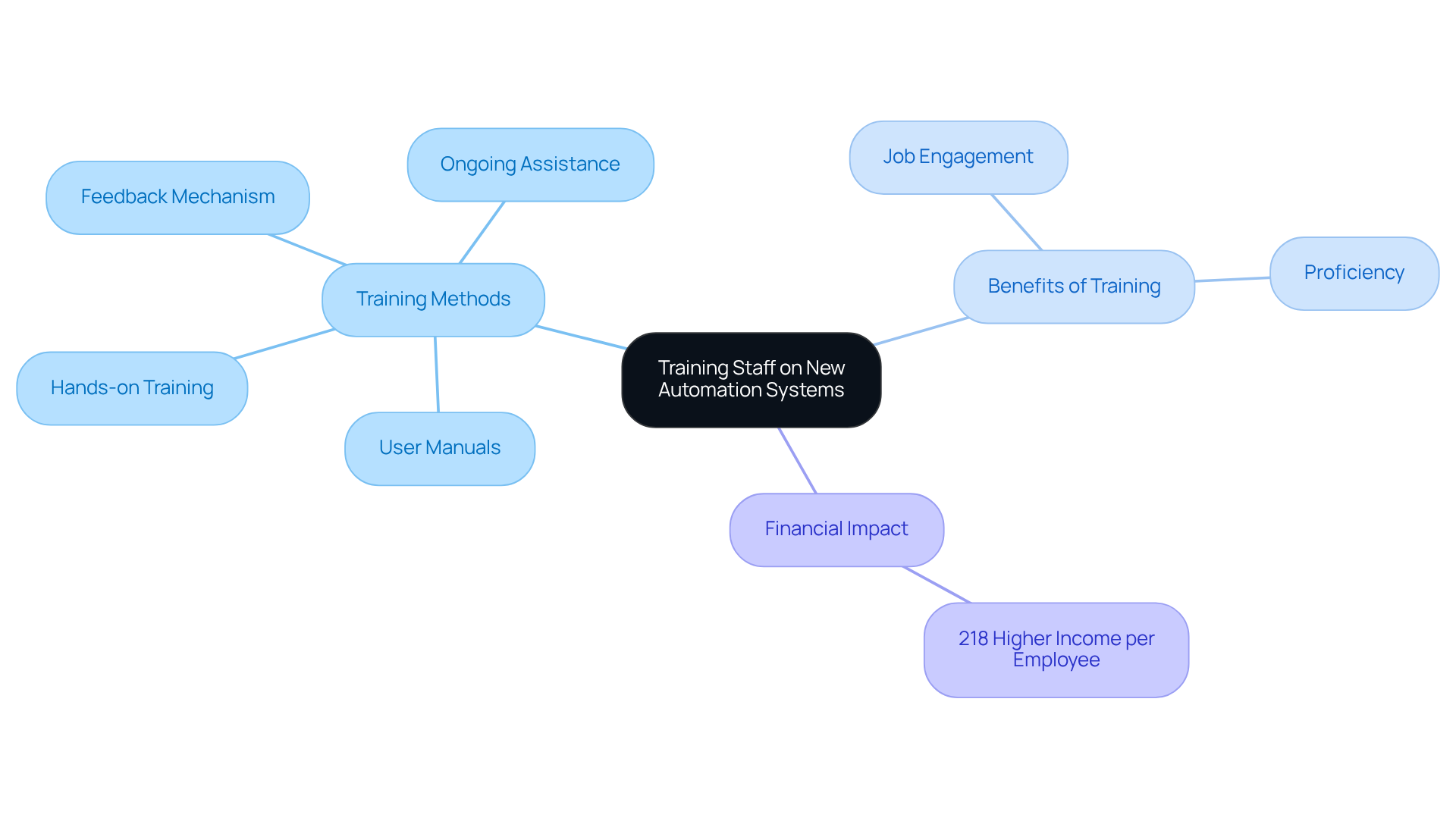
Evaluate and Optimize Automated Workflows
To maximize the effectiveness of your automated workflows, it is essential to regularly evaluate their performance. Gathering information on key performance indicators (KPIs) such as processing times and error rates provides valuable insights into the influence of mechanization on your operations.
For instance, entities that have adopted mechanization in property document management have reported processing time decreases of up to 70%, significantly enhancing efficiency. Furthermore, establishing a cross-functional team to review feedback from staff is crucial; understanding their experiences with the new systems can help identify challenges and areas for improvement.
This feedback loop enables informed adjustments, whether it involves refining processes, upgrading software, or enhancing training programs. By fostering a culture of continuous improvement, your land record office can utilize workflow automation for land record offices to adapt to evolving demands and sustain high efficiency levels.
As noted by industry experts, optimizing workflow automation for land record offices not only streamlines operations but also enhances overall job satisfaction among employees, with 66% of knowledge workers reporting increased productivity due to this automation. In addition, safeguarding data and implementing measures to prevent breaches in automated processes is vital for protecting sensitive information.
By prioritizing these aspects, your organization can ensure a more productive work environment.
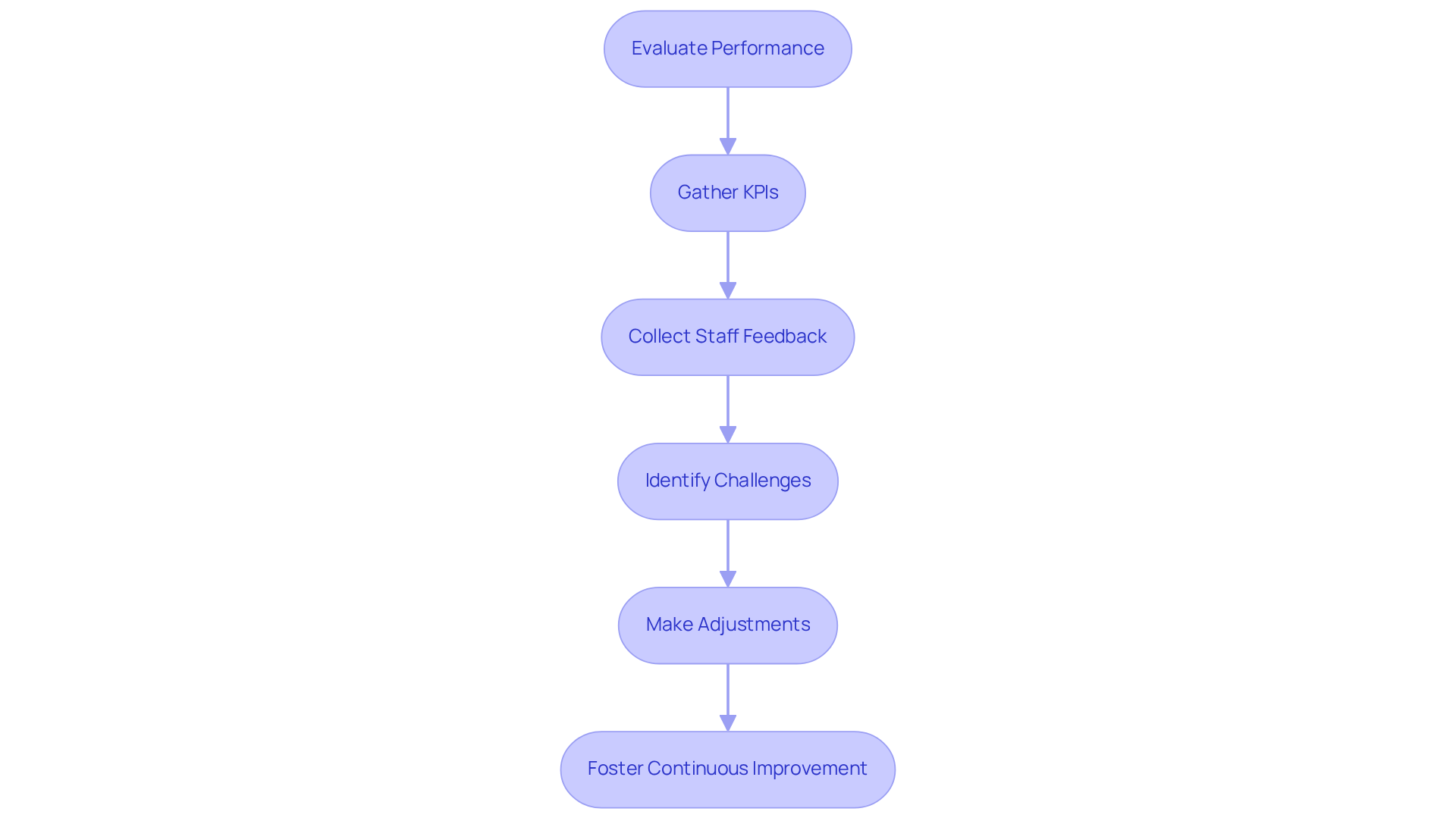
Conclusion
Implementing workflow automation in land record offices signifies a transformative shift towards heightened efficiency and accuracy in property management. By mechanizing repetitive tasks, these offices can markedly reduce manual effort, minimize errors, and enhance data precision. This evolution not only streamlines operations but also ensures that property information remains current and accessible, which is vital for effective management.
Throughout this article, we have highlighted key components of successful automation, including:
- The importance of assessing current workflows
- Selecting appropriate tools
- Training staff
- Continuously evaluating automated processes
Engaging with staff to identify pain points, utilizing advanced document management systems, and fostering a culture of ongoing improvement are essential strategies that can lead to substantial operational gains. The presented statistics underscore the financial and efficiency benefits of automation, with many organizations poised to increase their investments in this area.
As land record offices look toward the future, embracing workflow automation is not merely an option but a necessity for adapting to the evolving demands of the sector. By prioritizing automation, organizations can enhance their operational effectiveness and improve employee satisfaction and engagement. The call to action is clear: invest in automation solutions, commit to staff training, and cultivate a mindset of continuous improvement to unlock the full potential of workflow automation in land administration.
Frequently Asked Questions
What is workflow automation in land record offices?
Workflow automation in land record offices involves using tools to simplify and mechanize repetitive tasks within property documentation offices, significantly reducing manual effort and minimizing errors.
What are the benefits of implementing workflow automation?
Implementing workflow automation improves data precision, accelerates processes, and enables property management offices to manage extensive datasets more efficiently. It also ensures that property details are updated and accessible in real time.
What are the key components of process management in land record offices?
The key components include document management systems, automated alerts, and advanced data extraction tools, which are essential for enhancing operational efficiency.
How does process optimization affect error rates?
Organizations implementing process optimization can achieve error reduction rates between 40% and 75% compared to manual processing, leading to improved data management and compliance.
What financial benefits can organizations expect from workflow automation?
The average organization realizes annual savings of $46,000 by automating finance-related workflows.
What challenges might organizations face when implementing workflow automation?
Potential challenges include resistance to change and integration issues with legacy systems, which can hinder the successful implementation of automated processes.
Why is it important to assess current workflow processes before implementing automation?
Assessing current workflow processes helps identify bottlenecks, redundancies, and areas prone to errors, clarifying where mechanization can provide the most significant advantages.
How can staff input contribute to improving workflow processes?
Gathering feedback from staff on their daily tasks can highlight pain points and areas where automation can significantly reduce time spent on manual data entry and improve information retrieval precision.




